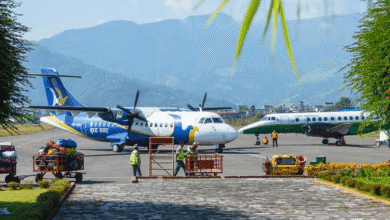Top 3 Fantastic Travel Attractions in Nanjing

Nanjing, the capital of Jiangsu Province, boasts a rich tapestry of history and culture, making it a must-visit destination for tourists. The city is etched with historical significance, having served as the capital of several Chinese dynasties. Travelers can explore the impressive Ming Xiaoling Mausoleum, the regal Sun Yat-sen Mausoleum, and the ancient city wall, which is one of the best-preserved examples in China. A stroll along the Qinhuai River, often referred to as the mother river of Nanjing, allows visitors to soak in the charming scenery of traditional gardens and ancient bridges, highlighting the city’s picturesque landscape. Additionally, Nanjing’s culinary delights are not to be missed. Try the famous salted duck or sample local street food at bustling markets like Hunan Road, where the flavors of the city truly come alive. With so much to see, Nanjing presents endless opportunities for exploration and discovery.
Travelers eager to visit this historical gem will be pleased to know that Cathay Pacific provides flight services from San Francisco To Nanjing to Nanjing, ensuring convenient access to this vibrant city. The modern infrastructure and transport facilities make navigating Nanjing a breeze, whether delving into splendid museums, such as the Nanjing Museum or the Memorial Museum of the Nanjing Massacre, or exploring the lively shopping districts full of local crafts and souvenirs. Engaging with the local culture is easy, as there are numerous festivals and events throughout the year celebrating the city’s rich traditions. Whether you are interested in history, food, or natural beauty, Nanjing promises an enriching experience that lingers long after you’ve left. Make sure to plan your visit to immerse yourself fully in the unique attractions that this remarkable city has to offer.
Ming Xiaoling Mausoleum
The Ming Xiaoling Mausoleum, located at the foot of the Purple Mountain in Nanjing, China, serves as the final resting place of the Hongwu Emperor, Zhu Yuanzhang, the founder of the Ming Dynasty. Constructed between 1381 and 1405, this grand mausoleum showcases the artistic and architectural ingenuity of the period, encompassing both traditional Chinese design elements and imperial grandeur. Spanning an area of approximately 1.2 square kilometers, it is recognized as a UNESCO World Heritage Site, drawing history enthusiasts and tourists from around the globe. The intricate layout reflects the principles of feng shui, demonstrating the importance of harmony between nature and human-created environments.
Visitors to the Ming Xiaoling Mausoleum are greeted by a tranquil avenue known as the “Spirit Way,” flanked by majestic stone animals and mythical creatures that symbolize strength and protection. This path, lined with impressive sculptures, leads to the main tomb area, creating a sense of reverence for the site. As one progresses along the Spirit Way, the meticulously carved stone figures and ancient trees evoking a serene atmosphere create a solemn yet beautiful journey toward the emperor’s resting place. The artistry involved in these sculptures is a testament to the skilled craftsmanship of the Ming era, reflecting the dynasty’s cultural richness.
At the heart of the mausoleum lies the main tomb, an impressive structure adorned with intricate carvings and beautiful inscriptions. The tomb itself is an underground chamber that houses the remains of the Hongwu Emperor and his empress, along with various ceremonial items intended for use in the afterlife. The grandeur of the tomb emphasizes the emperor’s significance in Chinese history, as well as the belief in the afterlife that permeated Ming-era culture. This burial site has become a focal point for learning about the rituals, beliefs, and art of the Ming Dynasty.
Today, the Ming Xiaoling Mausoleum stands not just as a reminder of imperial grandeur but also as a symbol of China’s rich cultural heritage. The mausoleum attracts thousands of visitors each year, allowing them to explore the historical significance and architectural splendor of the site. As visitors walk through this serene and hallowed ground, they are transported back in time, witnessing the legacy of an emperor whose reign shaped a pivotal period in Chinese history. Beyond its historical value, the site emphasizes the enduring nature of remembrance, honoring those who have played a crucial role in the nation’s past.
See also: Original Power Bank 50000mAh for Sale – Avoid Fakes in Pakistan
Zijin Mountain
Zijin Mountain, also known as Purple Mountain, is a prominent landmark situated in Nanjing, Jiangsu Province, China. The mountain holds both natural beauty and historical significance, making it a popular destination for tourists and locals alike. Rising 448 meters above sea level, it offers stunning panoramic views of the surrounding city and the Yangtze River. The name “Zijin” comes from the mountain’s distinctive purple hue, particularly noticeable at sunrise and sunset. The area is rich in flora and fauna, with various hiking trails and lush vegetation, making it a haven for nature lovers and outdoor enthusiasts.
A key feature of Zijin Mountain is its historical significance. It has been an important site for Chinese culture and history for centuries, serving as a royal burial ground and a sacred place for Confucianism. The Ming Dynasty’s first emperor, Zhu Yuanzhang, chose this mountain range as the burial site for his family, and numerous mausoleums and monuments can be found dotting its slopes. Among them, the Ming Xiaoling Mausoleum, a UNESCO World Heritage site, stands out as a testament to the architectural grandeur of the time. The mausoleum complex features intricate carvings, ancient trees, and the iconic Spirit Way, which is lined with stone animals and human figures.
In addition to its historical sites, Zijin Mountain is home to several important cultural institutions, including the Nanjing Observatory, one of the oldest observatories in China. Established in the 17th century, it has played a significant role in the development of Chinese astronomy. Visitors can also explore the Sun Yat-sen Mausoleum, dedicated to the founding father of modern China. The combination of nature, history, and culture makes Zijin Mountain a vital part of Nanjing’s identity, drawing visitors year-round.
With its captivating landscapes and rich heritage, Zijin Mountain is more than just a natural wonder; it embodies the spirit and history of Nanjing. The mountain’s trails offer pathways through time, allowing visitors to reflect on the past while enjoying the present. Whether hiking its scenic routes, visiting historical sites, or simply relaxing amidst nature, a trip to Zijin Mountain captivates the heart and mind, making it a cherished experience for all who venture there.
Confucius Temple (Fuzimiao)
The Confucius Temple, known as Fuzimiao, is a significant cultural landmark located in Nanjing, China. Established during the Song Dynasty in 1034, the temple was constructed in honor of the esteemed philosopher Confucius, whose teachings have profoundly influenced Chinese civilization for centuries. The site not only served as a place of worship but also as a center for education, reflecting Confucius’s emphasis on learning and moral integrity. Over the centuries, the temple has undergone various renovations and expansions, showcasing a fusion of architectural styles that echo the rich history of Nanjing itself.
Visitors to Fuzimiao are greeted by a magnificent entrance, framed by intricately designed gates adorned with traditional Chinese motifs. The temple complex is characterized by its stunning classical architecture, with wooden beams and red pillars standing in harmonious alignment. Within the compound, visitors can explore several halls and pavilions, each dedicated to different aspects of Confucian philosophy and the life of Confucius. The Great Hall of Confucius is particularly noteworthy, housing a statue of the great philosopher alongside tablets inscribed with his teachings, and serving as the spiritual heart of the temple.
Fuzimiao is more than just a historical site; it also plays a vibrant role in contemporary culture. The surrounding area has evolved into a bustling marketplace, where stalls offer local delicacies, traditional crafts, and souvenirs. Cultural events and festivals are frequently held in and around the temple, celebrating Confucian values and promoting a connection to China’s rich heritage. This lively atmosphere attracts both tourists and locals, creating a unique blend of reverence and festivity.
In conclusion, the Confucius Temple (Fuzimiao) stands as a testament to Confucian ideals and their lasting impact on Chinese society. It serves as a bridge between the past and present, allowing visitors to engage with the teachings of Confucius while enjoying the vibrant culture that surrounds it. This enchanting site continues to inspire generations, encouraging a deeper understanding of moral philosophy, education, and the importance of heritage in an ever-changing world.




